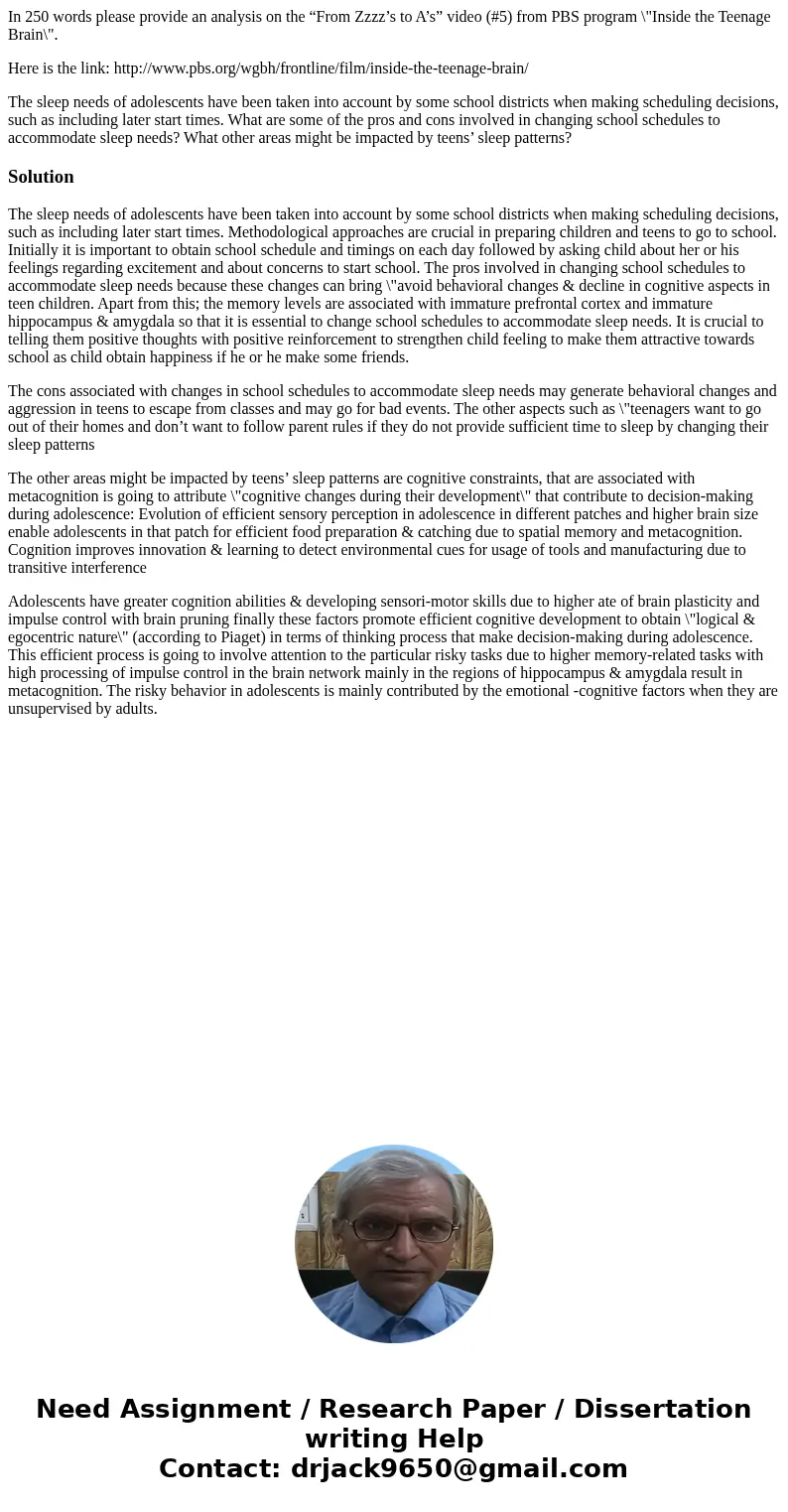In 250 words please provide an analysis on the From Zzzzs to
In 250 words please provide an analysis on the “From Zzzz’s to A’s” video (#5) from PBS program \"Inside the Teenage Brain\".
Here is the link: http://www.pbs.org/wgbh/frontline/film/inside-the-teenage-brain/
The sleep needs of adolescents have been taken into account by some school districts when making scheduling decisions, such as including later start times. What are some of the pros and cons involved in changing school schedules to accommodate sleep needs? What other areas might be impacted by teens’ sleep patterns?
Solution
The sleep needs of adolescents have been taken into account by some school districts when making scheduling decisions, such as including later start times. Methodological approaches are crucial in preparing children and teens to go to school. Initially it is important to obtain school schedule and timings on each day followed by asking child about her or his feelings regarding excitement and about concerns to start school. The pros involved in changing school schedules to accommodate sleep needs because these changes can bring \"avoid behavioral changes & decline in cognitive aspects in teen children. Apart from this; the memory levels are associated with immature prefrontal cortex and immature hippocampus & amygdala so that it is essential to change school schedules to accommodate sleep needs. It is crucial to telling them positive thoughts with positive reinforcement to strengthen child feeling to make them attractive towards school as child obtain happiness if he or he make some friends.
The cons associated with changes in school schedules to accommodate sleep needs may generate behavioral changes and aggression in teens to escape from classes and may go for bad events. The other aspects such as \"teenagers want to go out of their homes and don’t want to follow parent rules if they do not provide sufficient time to sleep by changing their sleep patterns
The other areas might be impacted by teens’ sleep patterns are cognitive constraints, that are associated with metacognition is going to attribute \"cognitive changes during their development\" that contribute to decision-making during adolescence: Evolution of efficient sensory perception in adolescence in different patches and higher brain size enable adolescents in that patch for efficient food preparation & catching due to spatial memory and metacognition. Cognition improves innovation & learning to detect environmental cues for usage of tools and manufacturing due to transitive interference
Adolescents have greater cognition abilities & developing sensori-motor skills due to higher ate of brain plasticity and impulse control with brain pruning finally these factors promote efficient cognitive development to obtain \"logical & egocentric nature\" (according to Piaget) in terms of thinking process that make decision-making during adolescence. This efficient process is going to involve attention to the particular risky tasks due to higher memory-related tasks with high processing of impulse control in the brain network mainly in the regions of hippocampus & amygdala result in metacognition. The risky behavior in adolescents is mainly contributed by the emotional -cognitive factors when they are unsupervised by adults.

 Homework Sourse
Homework Sourse